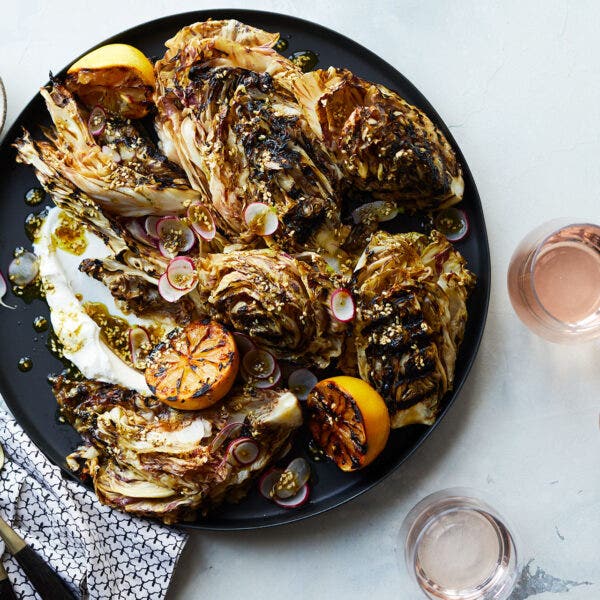What is Zinfandel
Pronunciation: ZIN-fuhn-del
Zinfandel is a black-skinned grape grown primarily in California that produces red wines, rosés or Port-styled fortified wines. Its grapes grow in large, compact cones with berries of varying ripeness levels. Because grapes ripen at different times, the resulting wines can have a mix of dried and fresh fruit flavors, however some winemakers hand select the clusters to hone the flavor profile.
The grape, known as Primitivo in Italy, thrives in warm, dry climates and can produce wines from 12% to nearly 20% alcohol-by-volume (abv). Wines are often made from old vines that have matured in the vineyard for as long as a century.
What Is Red Zinfandel?
Ranging from fruity and approachable to tannic and bold, there’s pretty much a red Zinfandel for every palate.
For a classic Italian example of this red, look for a bottle from the Primitivo di Manduria. These bottles tend to be dense and exhibit notes of fig jam and dried citrus.
In California, Zinfandels tend to be between 14 to 16% abv. You can expect them to be full-bodied, jammy and spicy, but not very tannic. For a classic New World example, check out bottles from Amador County.
What Is White Zinfandel?
Contrary to the name, white Zinfandel isn’t actually white. It’s a rosé, usually semi-sweet in style. And this wine has made many a person into a wine lover.
White Zinfandel was made accidentally by Sutter Home in the 1970s, when a batch of must, bled from a red-wine fermentation, failed to ferment dry. In other words, it was a sweet rosé made by the saignée method.
White Zin tends to be juicy, fruity and easy for new wine drinkers to appreciate. This style has undergone many a transition since its accidental inception. But some newer examples are similar to Primitivo-based rosatos from Southern Italy.
Where the Grapes Appear in Beverages
Zinfandel produces red wines, rosés or Port-styled fortified wine.
Zinfandel Synonyms
Many grape varieties have several different names, depending on where they are grown. And Zinfandel is no exception.
This versatile grape is known as Tribidrag or Crljenak Kaštelanski in Croatia and Montenegro. Travel over to Italy, and you’ll hear it called Primitivo in Puglia. Some producers in California label their wines as Primitivo, too.
Other lesser-used names for Zinfandel include Kratošija, Morellone, Pribidrag, Primaticcio Primitivo di Gioia, Primativo, Trebidrag, Uva di Corato and Zagarese.
Zinfandel Regions
Zinfandel is grown throughout the world, but some of the best examples from Italy and California.
Zinfandel in Italy
Known as Primitivo in Italy, the grape is most well known in the southern region of Puglia. The generally warm climate of the area produces richly fruited wines that show lots of jammy cherry and blackberry tones, alongside lifted accents of spice, violet and orange rind.
The most well-known expression from Puglia is Primitivo di Manduria, which is from a region that sits alongside the Ionian Sea. In more central Puglia, Primitivo from the Gioia del Colle appellation can be lighter and more elegant in style. Well-priced, accessible options abound in the Salento Indicazione Geografica Tipica (IGT) too.
Zinfandel in California
Production of Zinfandel began to surge in California following the Gold Rush of 1849. It is now grown across the state, with notable examples coming from Napa, Sonoma, Lodi, the Sierra Foothills, Mendocino County and Paso Robles.
Styles vary among these regions, with some of the hotter climates yielding powerful wines with muscle and depth, and the cooler climates like Russian River Valley providing more nuanced, expressive and even peppery wines.
Zinfandel Tasting Notes
Typically, Zinfandel displays a signature spice profile, as well as jammy fruit flavors, like blueberries, blackberries and raspberries. They are typically full-bodied and not very tannic, unless blended with Petite Sirah, which is common.
White Zinfandel is often juicy and fruity. Port-style fortified Zinfandel tends to be sweet and chocolaty.
Zinfandel Pairs Well With…
The most important rule of pairing wine and food? Find what you like. But if you happen to have some Zinfandel on hand here are some pairing tips.
With such a wide range of styles, Zinfandel can pair with a whole host of foods.
If you’re grilling up some burgers, steaks, lamb chops or other meats reach for a tannic and hearty Zinfandel (like a bottle from Primitivo di Manduria).
If you have a Zinfandel on the lighter- to medium- bodied side, try it with cheeses as well as turkey and pasta dishes with tomato sauce.
White Zinfandel is also great for serving with lighter appetizers, charcuterie boards, fruit salad or seafood kebabs.
Another thing to keep in mind is that more peppery Zinfandels, grown in cooler climates, will also go great with Indian dishes like Palak paneer, a classic curry from Northern India.
Zinfandel grapes are found in red, rose, and dessert wines.
Structural Characteristics
Examples of Zinfandel to Try
Pairs Well With
Handling Tips
Fun Facts
- There is evidence that the earliest Zinfandel wine was made around 6000 B.C.E.
- Zinfandel was planted heavily in California during the 19th-century Gold Rush.
- Zinfandel originated in Croatia, where it is known as Crljenak Kaštelanski.
- Zinfandel is called Primitivo in Italy because it ripens early in the season.














